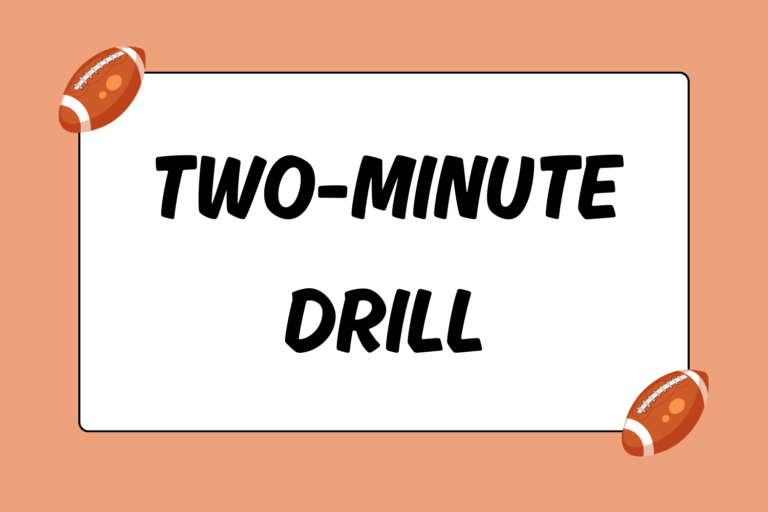To people unfamiliar with the game, football is football. Regardless of the type being played or age of players, the structure is the same, the rules are the same, and the field is the same. In reality, that’s not an accurate view of football at all. Though they’re subtle, there are actually differences between all levels of the game. Among the most significant of differences is with the layout of the fields. Below is an overview of the characteristics that set each of football’s different levels apart.
American Football
The National Football League (NFL) is considered the definitive form of American Football, although football at the collegiate level enjoys a healthy audience as well. Being that professional football is the most popular of all the forms, the dimensions and characteristics listed below will all focus on an NFL field.
Overall Dimensions:
At the professional level, the total size of the field is 120 yards (360 feet) long by 53.5 yards (160 feet) wide; that total length is broken down into 100 yards of playing field and two end zones that are each 10 yards in length.
Personnel Boundaries:
All team personnel members are required to stay within an area marked by two ‘Restraining Lines’ at each 30-yard line, and behind the six-foot-wide area that marks the boundaries. This is the area where players, coaches, staff, etc. must remain for the duration of the game.
Markings:
The lines marking the playing area (side lines, goal lines, lines at the back of the end zone) are all four inches wide. A solid white border, six feet in width, surrounds the end zones to mark the boundaries. This border usually extends along both sidelines and encompasses the lines marking the playing area. It is common for each team to have their logos painted at the exact middle point of the field, and a similar design in the end zones. Regardless of the design, the only rule regarding non-measurement markings on the field is that they must be approved by the NFL.
- Solid Yard Lines: Starting at each goal line and moving inward, there are solid lines painted every five yards that run the width of the field; the smaller individual lines representing single yards are placed at one-yard intervals between these solid lines.
- Individual Yard Lines: Because progress is measured in yards, the lines indicating individual yards are the most important.There are four sets of small lines (2 feet in width) that indicate each yard between both goal lines and the exact middle of the field at the 50-yard line. Of those four sets, two are always placed four inches in from both sidelines, and the other two are placed at 70 feet, 9 inches in from each sideline.
- Field Numbers: Every ten yards, numbers measuring 4 feet wide by 6 feet high indicate the distance of each of these lines from their respective goal line. The numbered lines from both ends of the field meet, and end, at the 50-yard line.
Uprights Measurements:
Though it’s not technically associated with the field dimensions, the uprights are considered a part of the playing field. In the NFL, the uprights stand from a goal-post situated at the very middle of the back boundary line of each end zone. The goal-post crossbar is 10 feet from the ground, with the uprights being at least 20 feet high and spaced 18 feet, 6 inches apart.
Collegiate Football
Football at the college level is played on a field that looks almost exactly the same as a standard NFL field. The size of the field is the same, as are the goal-post and uprights. The dimensions and markings are the same with one exception: The inside set of hash marks (those not touching the sidelines) are situated differently, resting 60 feet in from each sideline rather than at 70 feet 9 inches.
High School Football
In terms of overall size and boundaries, a high school football field is also almost the exact same as an NFL field. However, just like on a college field, the inside pair of hash marks are positioned differently; at the secondary grade level, they sit 53 feet, 4 inches in from each sideline. The only other difference is in the spacing of the uprights posts; while the distance between them measures 18 feet, 6 inches in both professional and collegiate football, at the high school level they are 23 feet, 4 inches apart.
Youth Football Modifications
Sometimes youth football is played on a smaller version of a normal High School field. Different places have different qualifications for “Youth,” but it’s usually any team that fields players not yet in a secondary grade, usually either sixth or seventh grade. When modifications are made, the following field measurement changes are simply marked off with the help of pylons or cones:
- The length of the field is 80 yards, and the width is 70 feet, not yards.
- The end zones are eight yards deep.
- Because of the shortened length, the middle of the field is the 40-yard line, not the 50.
These are ust a few of the possible modifications that get made for younger football players. Exact field dimensions and specifications will vary according to the different youth football leagues/organizations that exist, as well as the specific age of the players.
Arena Football
While technically still a branch of American football, Arena football has a unique set of rules, especially regarding the field on which it’s played.
Overall Dimensions:
Unlike a normal football stadium (which can be indoor or outdoor), Arena football is played exclusively indoors, in venues where basketball and hockey are commonly played. In fact, if you were to make a hockey rink completely rectangular in shape, it would be the exact same size as an Arena football field: 66 yards long (50-yard field, 8-yard long end zones) by 28.5 yards wide.
There are two big differences between Arena football and all other types: Boards and field size. The field itself is only 50 yards long, literally half as long as other fields, and surrounded by boards. These boards are technically referred to as ‘sideline barriers.’ They are 4 feet high, and must be covered in league-approved, high-density foam padding.
Uprights Measurements:
Another big difference deals with the uprights, and specifically how missed field goals are handled. Unless it is physically blocked by a player, a missed field goal in other types of football means the play is over. In Arena football, however, the uprights (which measure 9 feet high by 15 feet wide) are flanked on both sides by two taut ‘rebound nets.’ If the ball bounces off these nets, it is considered live and can be played by either team.
Markings:
Other minor differences are with the size of the numbers on field (3 feet by 18 inches, located 15 feet from the sidelines), and the positioning of the hash marks (outside sets are 13.5 feet from the middle of the field, inside sets are 4.5 feet from the middle of the field).
Canadian Football
Canadian football fields share many of the same characteristics as NFL fields, including the various types of markings found both on and outside the field, as well as the size and dimensions of the uprights. However, there are a few significant differences:
Overall Dimensions:
The Canadian Football League plays its games on a larger field than its American counterpart. The total size of a Canadian field is 150 yards (450 feet) long by 65 yards (195 feet) wide, including end zones that are 20 yards deep.
Markings:
The on-field markings for Canadian football are very similar to those found on American football fields, with a few notable exceptions:
- Because the field is 110 yards longs, the exact middle of it falls on the 55-yard line, which is marked by two instances of a ‘C.’
- The interior sets of hash marks are placed 24 yards in from both sidelines.
Much like the field, the actual game structure of Canadian football is similar to that of the NFL, but unique enough to stand on its own.
Ball
Different levels also use a different size of football. Here is a breakdown of the sizes of football used at each level:
- Youth football: Depending on their age, players would use a Size 1 or Size 3 ball made of rubber or leather.
- High school football: Players use a Size 4 ball made of rubber or leather.
- Collegiate, Professional Level, and Arena: The short circumference is 20.75 – 21.25 inches; the long circumference is 27.75 – 28.5 inches; the weight is approximately 14-15 ounces; the length is 16 inches long; and it is inflated to have between 12.5 and 13.5 pounds per square inch.
- CFL: The short circumference is between 20.875 and 21.125 inches; the long circumference is between 27.75 and 28.25 inches; it is inflated to hold between 12.5 and 13.5 pounds per square inch; and it should weigh between 14 and 15 ounces.
Differences Aside
These aren’t the only characteristics that distinguish the various types of football from each other, but they are among the most important and noticeable in a game with very elaborate rules and regulations. Hopefully you now have a better understanding of the more distinguishing characteristics that exist between the different levels of the game!





